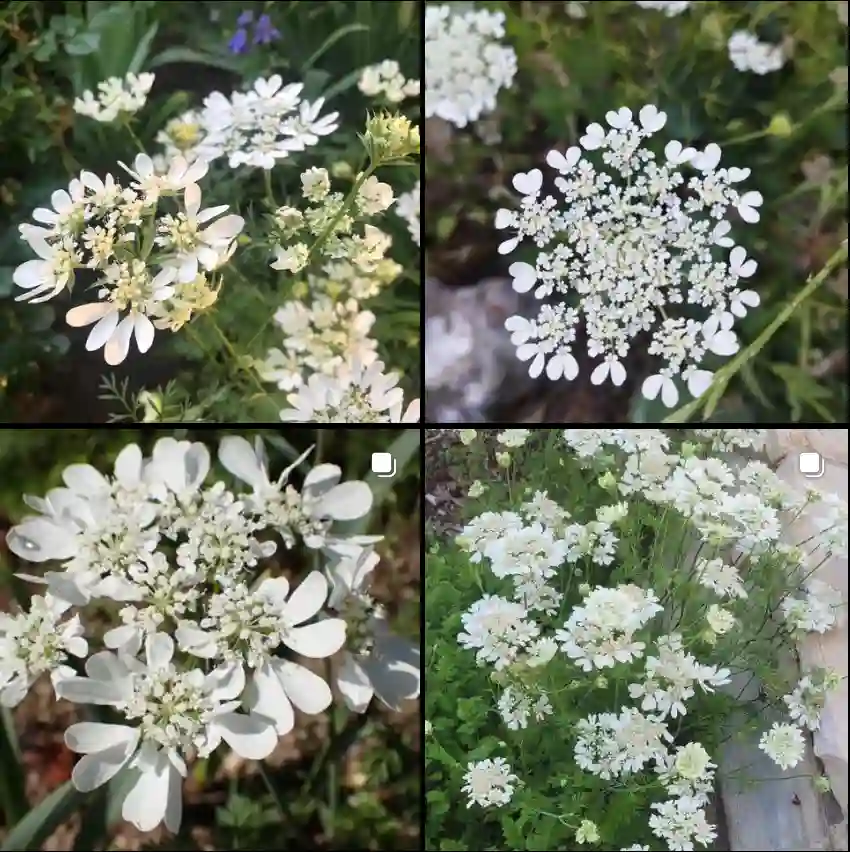
FAQs About Garlic Chives
Garlic Chives have become a staple in my garden and kitchen. If you’re new to growing or using them, you might have some questions. Here’s a comprehensive guide based on my experience with Garlic Chives.
1078 Species in Genus Allium
What Is a Garlic Chive?
Garlic Chives, also known as Allium Tuberosum, are a type of chive that offers a milder, garlic-like flavor compared to regular chives. They have flat, grass-like leaves and produce white star-shaped flowers. Garlic Chives are widely used in Asian cuisine and add a subtle, savory note to dishes.
How to Grow Garlic Chives?
Growing Garlic Chives is relatively straightforward. I usually start with seeds or seedlings. Here’s my process:
- Planting: I sow seeds directly into well-drained soil, preferably in a sunny spot. Garlic Chives thrive in full sun but can tolerate partial shade.
- Spacing: I space the seeds about 6 inches apart. This gives each plant room to grow.
- Watering: I keep the soil consistently moist but not waterlogged.
- Fertilizing: I apply a balanced fertilizer once in spring to boost growth.
How to Harvest Garlic Chives?
Harvesting Garlic Chives is one of the most rewarding parts. I wait until the leaves are at least 6 inches long. I cut the leaves with scissors or a sharp knife, taking care not to disturb the base of the plant. Regular harvesting encourages new growth, so I often trim them back every few weeks.
How to Use Garlic Chives?
Garlic Chives can be used in a variety of dishes. I love adding them to salads, soups, and stir-fries for an extra burst of flavor. They’re also fantastic in dips or as a garnish. The leaves are best used fresh, but they can be added at the end of cooking to preserve their delicate flavor.
Where to Buy Garlic Chives?
I usually find Garlic Chives at local nurseries or garden centers. They’re also available at some grocery stores, especially those with a good selection of herbs. For a broader selection, online plant retailers are a great option.
Are Garlic Chives Perennial?
Yes, Garlic Chives are perennial. They come back year after year, which is a big plus for me. They can handle a variety of climates, and with proper care, they’ll continue to thrive.
How to Store Garlic Chives?
To store Garlic Chives, I keep them in the refrigerator. I either wrap them in a damp paper towel and place them in a plastic bag or store them in a container with a tight lid. They stay fresh for about a week this way.
Are Garlic Chives Edible?
Absolutely! Garlic Chives are edible and commonly used in cooking. Both the leaves and flowers are safe to eat. The leaves are used in a wide range of dishes, while the flowers can be used as a garnish.
Are Chives and Garlic Chives the Same?
No, they’re not the same. Regular chives (Allium schoenoprasum) have a milder onion flavor and cylindrical leaves, whereas Garlic Chives have flat leaves and a subtle garlic taste.
Garlic Chives vs Chives
The primary difference is flavor. Garlic Chives have a more pronounced garlic taste compared to the onion-like flavor of regular chives. Also, Garlic Chives have flat leaves, while regular chives have round ones.
Garlic Chives vs Chinese Chives
Garlic Chives and Chinese Chives are often confused, but they are essentially the same plant. Allium tuberosum is the scientific name for both, and they are used interchangeably in recipes.
Garlic Chives vs Garlic
Garlic Chives are different from garlic bulbs. While they have a garlic-like flavor, they don’t have the same strong, pungent taste as garlic. Garlic Chives are more delicate and used fresh, whereas garlic is usually cooked.
Garlic Chives vs Green Onions
Garlic Chives and Green Onions (also known as scallions) are distinct. Green Onions have a milder taste and are used in cooking with both the white and green parts. Garlic Chives have flat leaves and a more subtle garlic flavor.
Garlic Chives vs Spring Onion
Spring Onions are different from Garlic Chives. Spring Onions have a bulbous base and a milder taste, while Garlic Chives are more herbaceous with a garlic flavor and do not form bulbs.
Garlic Chives vs Wild Garlic
Wild Garlic, or Allium ursinum, is a wild relative of cultivated garlic. It has a stronger garlic flavor and is used differently compared to Garlic Chives. Wild Garlic has broader leaves and is often foraged in the wild.
How to Care for Garlic Chives?
Garlic Chives are low-maintenance. They need well-drained soil and regular watering. I find that they grow best with occasional feeding and by keeping the area around them weed-free.
How to Propagate Garlic Chives?
I propagate Garlic Chives by division. In early spring or fall, I divide the clumps and replant them. This method ensures I have a continuous supply of Garlic Chives.
What to Plant With Garlic Chives?
Garlic Chives pair well with other herbs like parsley and cilantro. They also grow well alongside vegetables like tomatoes and carrots, as they help repel certain pests.
Is It Toxic?
Garlic Chives are not toxic. They’re safe for consumption and can be used in various dishes. However, they should be used in moderation if you have certain medical conditions, as with any herb.
Benefits of Garlic Chives
Garlic Chives offer several benefits. They’re rich in vitamins and minerals, including Vitamin C and calcium. They also have antioxidant properties and can aid in digestion.
Common Problems with Garlic Chives
One common issue is that Garlic Chives can sometimes suffer from rust or fungal infections. I keep an eye out for any signs of yellowing or spots and ensure good air circulation around the plants.
With this guide, I hope you feel more confident in growing and using Garlic Chives. They’re a fantastic addition to any garden and kitchen, bringing a mild garlic flavor to a variety of dishes.
If i die, water my plants!



